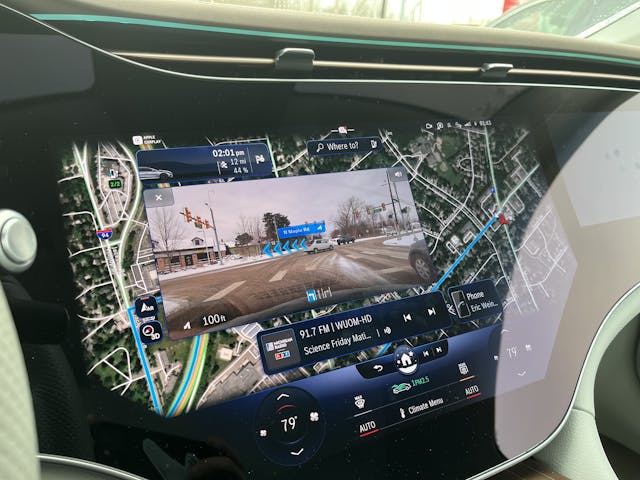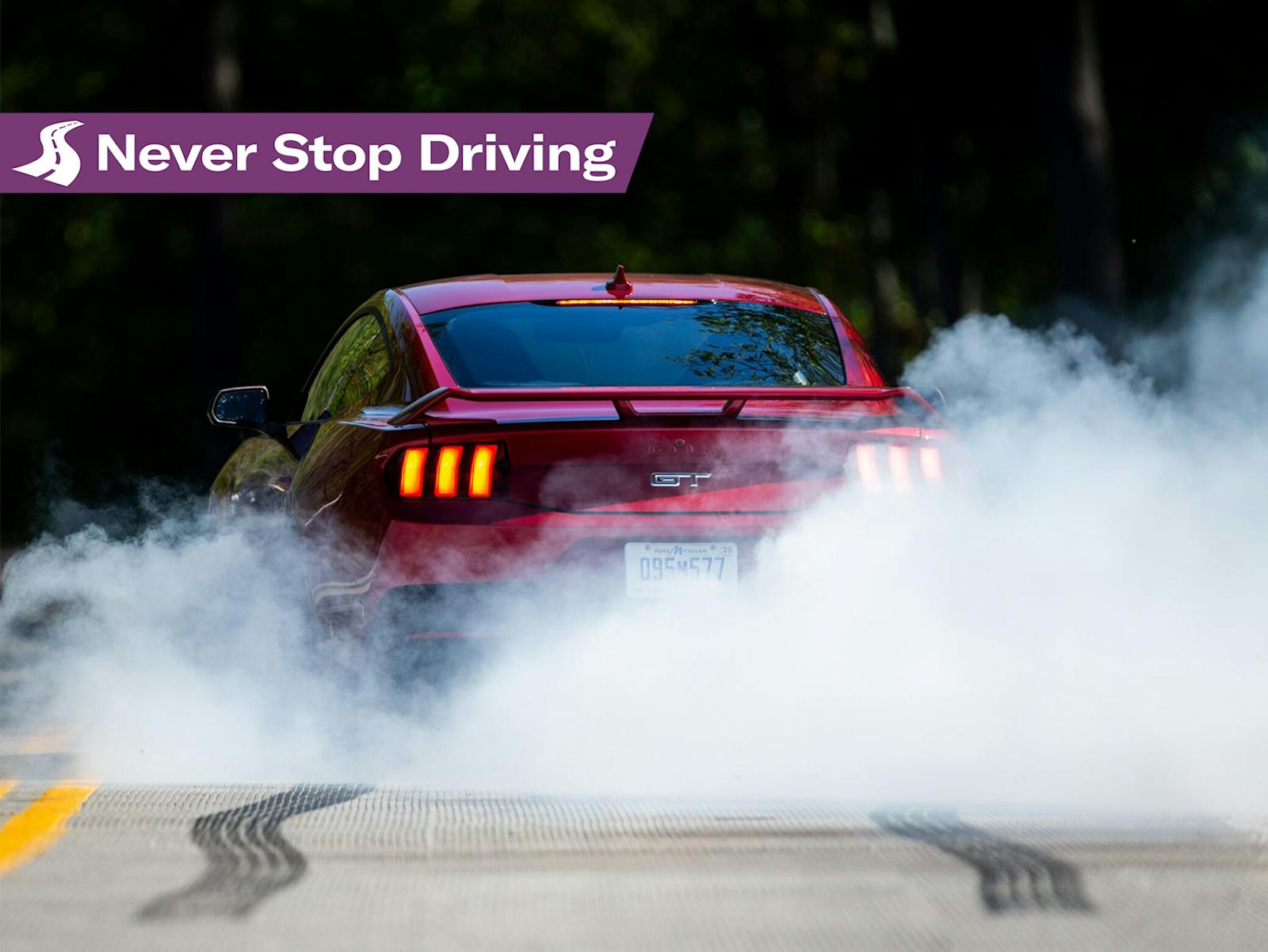Never Stop Driving #49: The Screen War
Car companies are struggling to become software companies. Volkswagen just replaced the chief of Cariad, its digital division, after software glitches and delays postponed the introduction of new car models.
VW established Cariad in 2020 with a mission to “transform cars into software-defined vehicles.” The company and its brands—VW, Porsche, Bentley, and others—build some nine million cars a year so there are significant potential cost savings if they all share a common operating system.
Software services are a golden carrot for car executives. Making cars is a notoriously tough, low-margin business. Serving every new customer means making another four-wheeled machine of steel, aluminum, rubber, and plastic. Digital products, however, scale effortlessly as there’s almost zero cost for, say, Spotify to add a new subscriber to its music service.

Tesla, which Wall Street values six times higher than VW, already offers monthly subscriptions. The EV manufacturer’s driver aid software, inaccurately named Full Self Driving, costs either $99 or $199 per month depending on capability. In the U.K., BMW offers subscriptions for heated seats. Ford CEO Jim Farley envisions a variety of digital services around electric work vehicles like the F-150 Lightning. Car-based subscriptions will only grow from here.
If you consider the software that runs modern fuel-injection systems, which rarely fail and don’t need reboots, you might presume that car companies are already supremely adept at software. Alas, even today’s engine management systems are ridiculously primitive compared with the computing power of a smartphone. The software-and-user-experience struggle kicked off more than two decades ago when automakers started packaging in-car navigation systems with more music options and other features. How could a driver—already tasked with an important job—operate it all?
They couldn’t. So-called infotainment systems were by and large a disaster. Remember BMW’s iDrive? Or the Lexus mouse and touchscreen? Ford realized voice activation was needed to avoid driver distraction but the technology wasn’t ready and its Sync feature often stumbled. Even today, these systems can make or break a car. While most of us are huge Volkswagen GTI fans because of how they drive, my colleague Jason Cammisa pointed out that the new user interface in the eighth-generation GTI is such a confusing mess, he would not buy the car based on that failure alone.
My sources inside the automotive industry tell me the Apple CarPlay and Android Auto in-car phone-mirroring systems are a two-edged sword. Yeah, consumers want them, but phone manufacturers and cellular service providers are the only companies making money off this essential service. That’s one reason General Motors announced that it will stop offering CarPlay and Android Auto in future EVs. Executives often say that car companies can deliver a better in-car experience. Sure. The real reason, of course, is money, from the data and the subscriptions.
GM’s decision makes sense, but to harvest that potential revenue, it and other car companies must become software and user experience ninjas. As we’ve seen with VW, that’s a herculean challenge. Ford, for example, is currently rehabbing a part of old Detroit to make an urban campus it hopes will attract the new tech talent it needs (we published a terrific piece on all the major Motown auto sites under development). Ford’s got work to do: I found the touchscreen system in the Mustang Mach-E to be much less intuitive than the one in a Tesla. Then again, another reviewer said the opposite. Interestingly, Ford CEO Jim Farley recently explained that the Dearborn company’s software strategy does not include kicking out CarPlay or Android Auto. “Our philosophy is we’re going to make the best Android, CarPlay experience you can imagine,” Farley said.

Like everything, tech is a mixed bag. Software and computers can increase productivity. From my chair, I’ve watched the number of people required to produce a magazine drop by two-thirds. Some 25 people were on the staff of Car and Driver when I started there in 1995 and now we produce the same number of pages per year in Hagerty Drivers Club magazine with only eight staffers. That’s not a perfect apples-to-apples comparison because C/D tests every new car, which we don’t do, but digital tools have unquestionably provided huge productivity gains in publishing.
Publishing companies, however, didn’t reduce their total workforce. Positions once needed to make magazines simply shifted over to IT, where technical, software-oriented positions often require salaries far higher than editors. So jobs shifted from one department to a different, costlier one. Does the company win? Car companies are struggling with this too as they still need to make cars. They need that subscription revenue.
Tech and the internet promised huge digital audiences and many print publishers obliged with websites and videos, but the expected revenue from larger digital audiences never arrived, so the overall quality of media declined in the race for cheap clicks. Then social media hoovered the lion’s share of the attention and advertising revenue. Publishing companies got disrupted by tech, which was disrupted by social. A new book called Traffic explains it all in greater detail. It was written by the former editor of Buzzfeed News, which recently shut down.
Here at Hagerty, we strive to produce high-quality media that doesn’t chase empty clicks, and we offer most of it for free via our website, YouTube channel, newsletters, and more. Why? Because we believe our digital media platforms help us to spread car love. As the person in charge of it all, I can tell you that our efforts are not free to produce so if you’d like to help, please consider signing up for the Hagerty Drivers Club, which now offers a free, 60-day trial. Or bring in a new member. All of us at Hagerty Media would be grateful.
Have a great weekend!
Hear from Larry every Friday by subscribing to this newsletter.
***
Check out the Hagerty Media homepage so you don’t miss a single story, or better yet, bookmark it.


G’day, Larry, I always enjoy your newsletter! I’m 73, and own 3 older cars over 23 years old and will NEVER purchase a new car that has mote than power windows and power outside mirrors. Manual gearbox? Good! No GPS, fine, I’ll use my Garmins. An AM/FM radio would be nice! I can put in a CD Player and Cassette player from the aftermarket. My 8-tracks are too few to save. I’ve been in the business of keeping old cars running for 55 years, no need to change. Consumers expect too much tech, and not enough driving skill….
Now there’s a guy with his head (gray as it might be) screwed on straight. You’re my new hero-of-the-day, Don!
Hi Don,
Yeah, I know what you mean. My daily is a 2020 Ram 1500. It’s the base model and is pretty simple, but there are many new 21-st Century features I’ve come to love like the heated steering wheel and the backup camera that makes attaching a trailer so easy. Others, like the two-zome climate control seem pointless.
The widespread use of digital screens is, and has been, totally disconcerting. First and foremost, they are a huge driving distraction. Secondly, except for the phone and music capabilities, most of the available car related info is rarely used. Why the NTSB doesn’t declare them a distacting menace and ban them is unfathomable. As far as driving, most people just point and ride in their car. Heck, they can’t even check the tire pressure.
From a car-company standpoint the subscription model maybe has some surface appeal:
-cut costs by making everything same spec, full options just turn the options off
-person that doesn’t pay full sub you can hound with special offers and upsell the subs they are missing for years
-person trades in the car you get to value it as what they are paying for at that mileage, but you get to sell it as a fully optioned car…
Consumer protection groups should be all over this though –automotive components are interconnected. A vehicle being inoperable due to an option you have never paid for breaking and putting the vehicle in limp mode or even just a part you don’t use (i.e., A/C) aging out and needing repair is going to sting later owners.
I will never willingly purchase a vehicle that runs off subscriptions.
But I also think not having AM broadcast for emergencies available in new vehicles is a public disservice…
I’ve never heard of any subscription having anything to do with operating the car. These services are typically envisioned for add-on features.
I see it as the big slope we are standing at the top of looking down. Sirius Radio, no harm. Cruise control and heated seats, peripheral options likely no harm. A/C with compressors and packaging into the serpentine system I can see having aging out costs even if the option is never paid for…
…but how far does this go? If somebody decides AWD is a subscription feature there is a cost to carrying that around on your only-subbed-to-2wd vehicle. Unused options are just added weight (heated seat wiring X 1 million cars not using it is a lot of wiring…), if we have to count the carbon on everything the “simplest you need” is surely more responsible than “build it full jam just in case someone along the line is willing to pay for all the subscriptions”
If the option purely exists digitally in the programming of the vehicle computer this cost/responsibility argument doesn’t apply, but the concept is still problematic to me.
The bait-and-switch “oops missed the fine print” sales tactics this opens up smell slimy to me. “I thought that price was with heated seat, steering and A/C…”
I concede I may be looking down the jaded side of the mountain though. I also think it is petty and embarrassing for any company selling you a $125000 car to be asking for a small monthly fee for any option.
👍
Larry, You have the best writers and content in automotive publishing. I buy my track day insurance from Hagerty because of what Hagerty is doing in the industry. Keep up the good work, and THANK YOU to McKeel Hagerty for his support. (Please tell him that I learned to drive a stick on tractors as well.)
Thank you Dale!
Great work. Keep it up 👍
Hi Larry- Paul Allen (ex-Escort guy) here.
The car companies already tried this “let’s make money by charging too much for features” strategy. Most of us remember the annual pitch “Update your built-in factory navigation system, we’ll send you a new data DVD (or flash drive) for only $199, but with FREE shipping!” And of course, if you were dumb enough to actually do you’d quickly realize that their “new” data was already out of date.
While Apple and Google are very profitably companies, note that their navigation services are free. Impossible to compete with that. There is no way car companies can compete with the free and superior nav and music services we already have on our phones.
If GM is actually dumb enough to eliminate Carplay et al, they will instantly discover a Bud-Lite-magnitude exodus of customers who will simply walk across the street and take their money to a more intelligent supplier.
I recently helped my 30 year old daughter find a new Rav4 hybrid, which she loves. A few months later, the Sirius music trial had expired, and a “only $5 a month” offer showed up in our mail. Thinking she might want to renew that, I kept it for her.
She laughed when I showed it to her. “Five dollars a month for music? Are they crazy? I’ve already got all the music and music apps I want on my phone.”
As for the “screens,” I certainly would have bought a Golf R instead of my GR Corolla if VW hadn’t made their interface so user-hostile. (The GR is bad enough!)
GM is way ahead on most of this. My 17 works great and the voice commands work properly.
The new screens GM is using are not only the top line LG screens but also designed by LG.
As for how this all works. Well only time will tell. The Apple play in our present cars is nothing great. The Bluetooth plays fine.
I feel GM can come up with a system that works fine but here is the trouble for all. The transition to subscription may be very difficult.
BMW is being hacked, GM is backing off forced Onstar.
I believe they all hope to sell EV models cheaper then sell apps for the car and that is where they will make their money.
Apple has set the example and while many said it would fail they have rode it to become one of the highest profit companies.
People today also are starting to look at vehicles only as transportation not an e tension of their image, wealth or Ego as it was in the past.
Let’s face it people buy Kias because of the price not image.
I expect many things will change and many ideas to be tries and only some will work.
But change is coming.
As an “old guy” who started as commercial photographer (now color management for all platforms) I put the blame for the subscription model squarely on Adobe. Remember when you could buy a software product, pay for it and use it? They were among the first mainstream software companies that forced you into that model. I wish I could use my 5.5 version of the Suite but alas, all my customers are subscribers. When you own a market, you can do as you wish. Anyone still using Quark?
Ah, Quark – there’s a name I didn’t think I’d see again – fond memories! (haha)
But I think you have a great point, Michael. A lot of people probably only think of Adobe in terms of “free” stuff, like Adobe Reader. But in your past world (and a bit in mine as a printer), Adobe had some pretty major tentacles wrapped around “subscription” services.
Good points. Once upon a time the USA was pretty set on “no monopolies in commercial ventures”. Well, at least in words the oil barons and railroad tycoons may disagree…
GM was almost carved up into separate companies for having too much market share.
But that idea hasn’t really been applied in a post-computer economy. The dominance of Windows being a case in point.
The solution probably should have been something like “If 75% of the market is one specific software, that becomes open source after 3 years”. Then the competition is to differentiate your version of Windows from the others. 3 years to own the market is a huge advantage, I’m sure Bill Gates would have done just fine.
Hey Larry!! Thanks for helping us “Old Dogs” understand!!!
GM’s thinking they’ll be able to make more money without Carplay is hilarious. All they’ll do is sell less cars. Carplay is by far the best car infotainment system I’ve used. It’s always up to date, uses real-time data, and has all my preferred apps and music.
If car manufacturers need subscription revenue to stay afloat, they’re doing it wrong. I will buy car options outright, or have someone hack them for me, but a subscription for my heated seats is never going to happen…